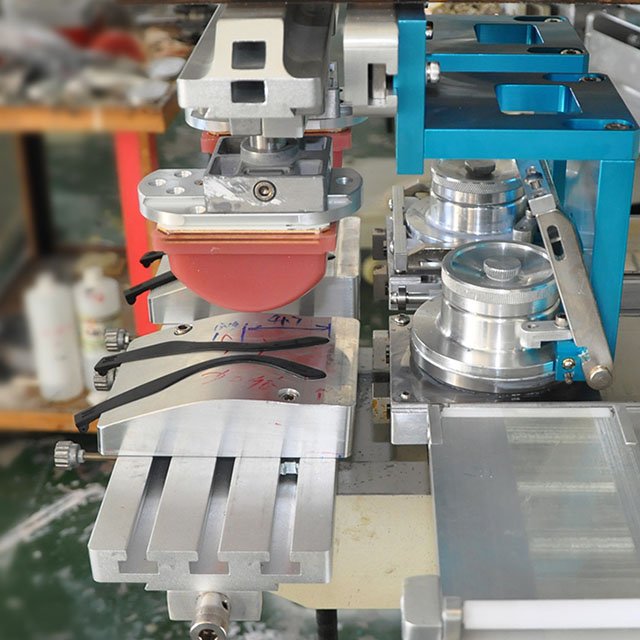Pad printing process, also known as tampography or tampo printing, is the process of transferring a 2-D image onto a 3-D part. It is an indirect offset (gravure) printing process where a silicon pad picks up ink (image) from an etched plate (also known as cliche) and transfers it onto a 3D object. This printing process prints odd-shaped parts such as curved (convex), hollow (concave), cylindrical, spherical, compound angles, textures, etc., which are not possible with traditional printing methods like inkjet. This printing process requires printing equipment. Printing machines range in style depending on the number of colors and the size of the image. Typical applications for this printing method include industrial, automotive, medical, promotional, and textiles.
To successfully pad print, you will need ink, an ink cup, or a doctor blade for open ink well machines, a printing plate (cliche), a silicone pad, and a pad printing machine.
To successfully pad print, you need a printing machine. This printing machine requires four components to perfectly print onto a part. These components are the printing plate, the ink cup, the silicone pad, and printing ink. We will review each of these pad printing supplies below.
An image gets etched onto a printing plate. The ink cup holds the ink. Each cup has a ceramic ring for doctoring (sliding) over the etched image on the plate. As the cup slides over the image, it leaves ink in the etch. This ink is then picked up by the printing pad and transferred onto the substrate.
The solvent evaporates, and the ink hardens and cross-links with the substrate.
Lets review the printing steps in detail:
3: Image pick up: The silicone printing pad compressed down onto the printing plate. This pushes the air outward, which in turn causes the ink to lift from the engraved artwork area onto the pad.
4: Image transfer: The sticky ink film inside the engraved artwork area lifts from the engraved artwork area. Please note that not all ink gets lifted from the etched printing plate. A small amount of ink is left on the etched plate.
5: Image flooding: The printing pad moves forward. At the same time the ink cup also moves back to the home position to cover the engraved artwork area on the printing plate. The ink cup again fills the engraved artwork in preparation for the next cycle.
6: Image transfer: The transfer printing pad compresses down onto the product. This transfers the ink layer picked up from the printing plate onto the product. Then, it lifts off the substrate and returns to the home position, thus completing one print cycle.


Open ink well printing equipment is an older method of pad printing. These printing machines use an ink trough (ink well) for the printing ink supply. The ink well is behind the printing plate. A flood bar, which is similar to a squeegee, pushed a pool of ink over the plate. It is this blade that removes the excess ink from the plate surface, leaving ink on the etched artwork area ready for the pad to pick up.


Laser plate-making is the process of etching a plate with a laser. There are two types of lasers: a fiber laser and a CO2 laser. These laser marking and etching systems allow for complete repeatability without concern for variation in etch depth, dot pattern, or image quality. Laser plate-making is fast, and takes about 6 minutes per printing plate.




Payment Once you submit the order form, we will send you a link to make the payment.
Please accept the terms and conditions by Boston Industrial Solutions.
Your request has been submitted. Someone from the team will contact you shortly.